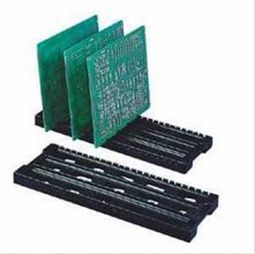SMT daily inspection items
One, PCB file
1. Each station needs to have qualified process documents, which must be displayed and operated in accordance with the requirements of the process documents.
2. Whether the materials and operation steps are consistent with the process documents.
Second, static electricity
1. Contact with ESD-sensitive components such as PCB semi-finished products must wear electrostatic gloves and electrostatic wristbands.
2. Anti-static measures must be taken for product stacking.
3. The electrostatic skin, electrostatic ring, electric soldering iron and other production and testing equipment need to be grounded.
Three, status
1. Products and materials that are irrelevant to the work station or in different states cannot be placed on the work surface.
2. Qualified products and non-conforming products should not be mixed separately, and the non-conforming products should be placed in the non-conforming product area and marked.
3. The status of all products and materials must be clearly and correctly identified.
Four, record
1. Whether the solder paste control record meets the requirements and the usage time is correctly registered. (The principle is first in, first out)
2. Whether the refueling record is registered and confirmed by non-person's signature. Is the time, station type, and material number registered correctly?
3. Whether the AOI station truthfully records the defective products tested and inspected. It is required to check once and record once.

4. Whether the maintenance station report is truthfully recorded, it is required to check once and record once.
5. Whether the mark on the material frame is the same as the actual condition of the material.
Five, solder paste control
1. The solder paste should be stored in a refrigerator at 0 degree Celsius-10 degree Celsius. (Exceeding the temperature of the refrigerator can easily cause the solder paste to deteriorate)
2. Reheat for 4 hours at room temperature, and the validity period is 48 hours after opening the lid. (Use before thawing time, it will cause tin beads)
3. Stir for 10 minutes before use. (Insufficient mixing time before use, uneven viscosity, poor tin printing effect and poor process after reflow soldering)
4. The PCB that has been printed with solder paste must not stay in the production line for more than 10 minutes before reflow soldering.
5. If solder paste is not needed, it should be collected and returned to the refrigerator and recorded accordingly. Only the remaining expiration date can be used next time.
Six, operating rules
1. Whether the PCB loading is qualified
2. Check the printing effect (there should be no joint tin, little tin, offset, etc.)
3. When installing Feida, load the materials according to the material list, and notify IPQC to check the materials after the check is OK.
4. The PCB boards that are qualified for production must be confirmed by the quality personnel, and the reflow soldering can be performed after the IPQC confirms OK.
5. The refueling and adjusting machine must be confirmed by the production and IPQC sequence and make corresponding records.
6. After mounting, the PCB must be visually inspected (check for missing paste, wrong paste, displacement, etc.) and then reflow soldered after OK.
7. When reflow soldering, the distance between the board and the board is more than 5cm. Blocking, stacking, and jamming are not allowed.
8. Whether the repaired products are traceable and meet the process requirements. (Maintenance must be marked and maintenance records)
9. Whether the engineering changes are fully implemented, whether the marking is done as required, and whether the marking position is correct.
10. Whether the PCB that fails to be printed at one time is cleaned with a cleaning machine in accordance with the standard.
Seven, other
1. Whether the defective and excessive production is notified and recorded within 10 minutes, whether it is analyzed and processed within 1 hour with temporary measures and whether it is effective2. In the process of refueling, whether the material number is written by hand for the material tray without material number
3. To use the hand pendulum, each component must be confirmed whether the silk screen is the same, and marked.
4. Whether the AOI test program is corrected, whether the repaired PCB circuit board is retested.